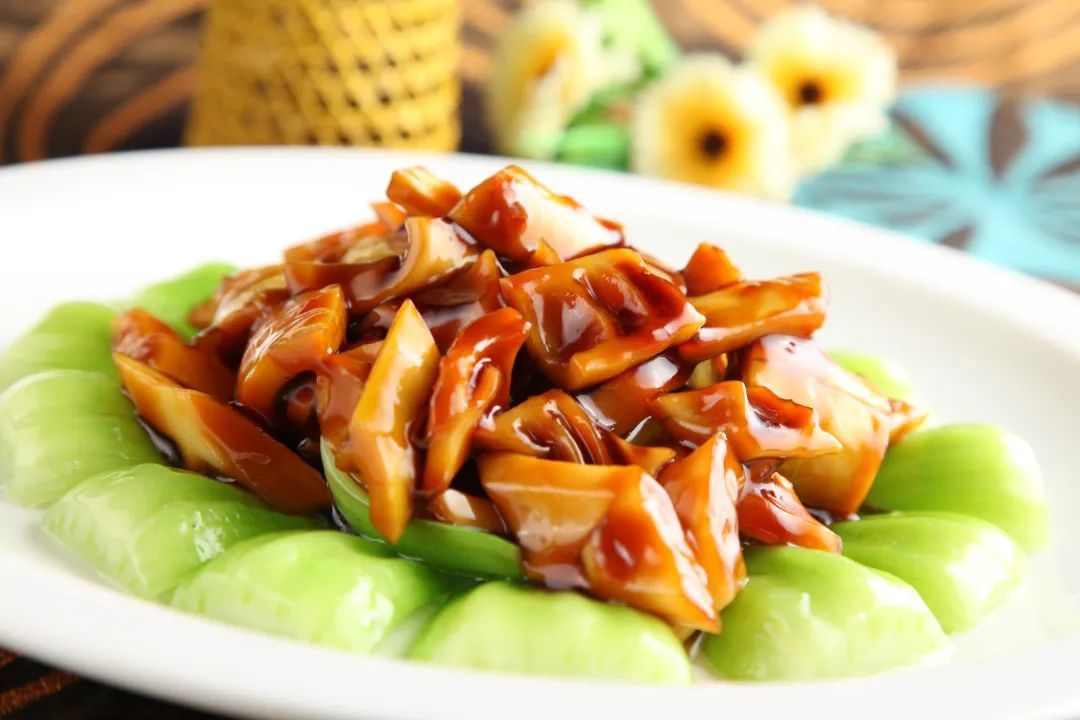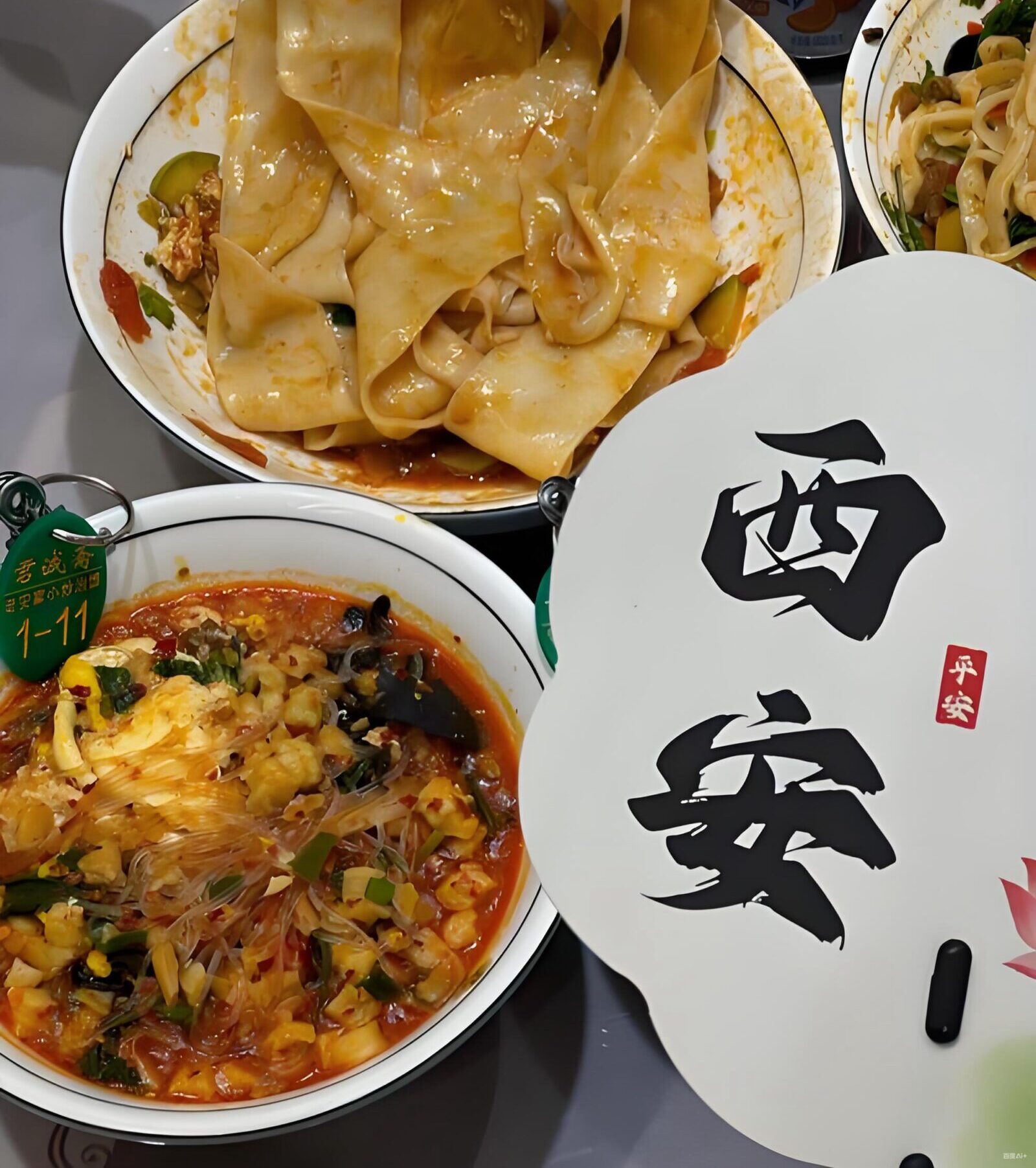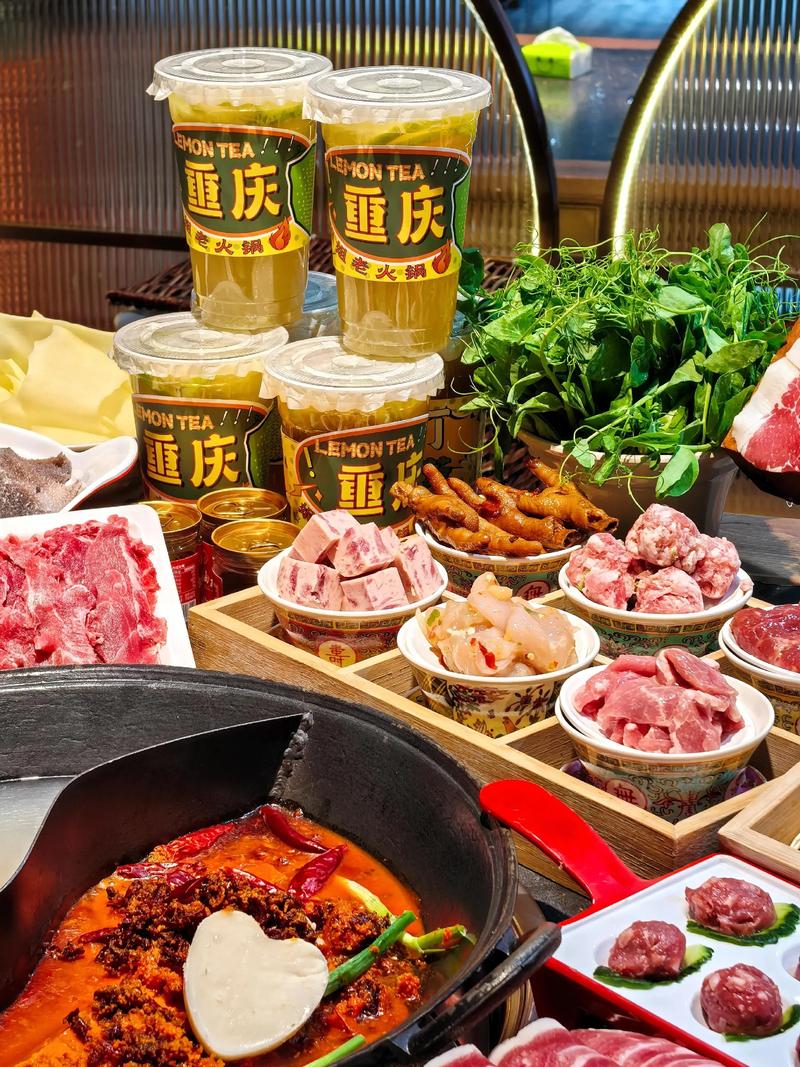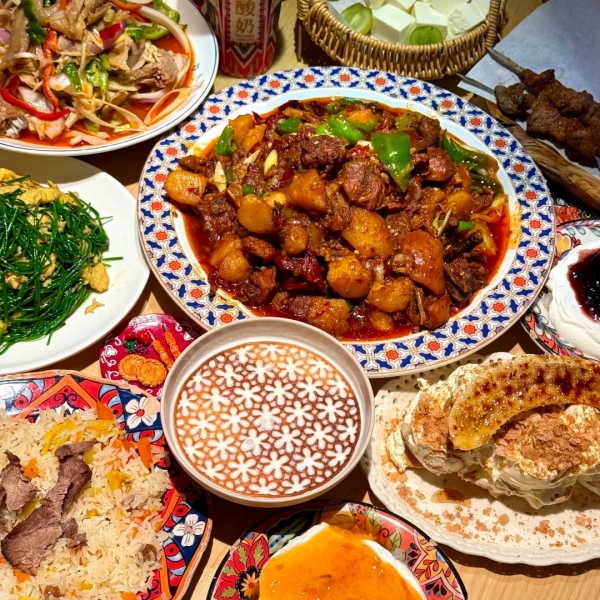Tucked between misty mountains and slow-moving rivers, Anhui cuisine doesn’t scream for attention—but it stays with you.
From smoky tofu skin hotpots to oddly comforting fermented fish, this is the kind of food you remember days later. We’ll take you through quiet villages, seasonal flavors, and all the little food moments that make Anhui worth slowing down for.
Want to see even more tasty options? Here’s the complete Chinese breakfast guide.
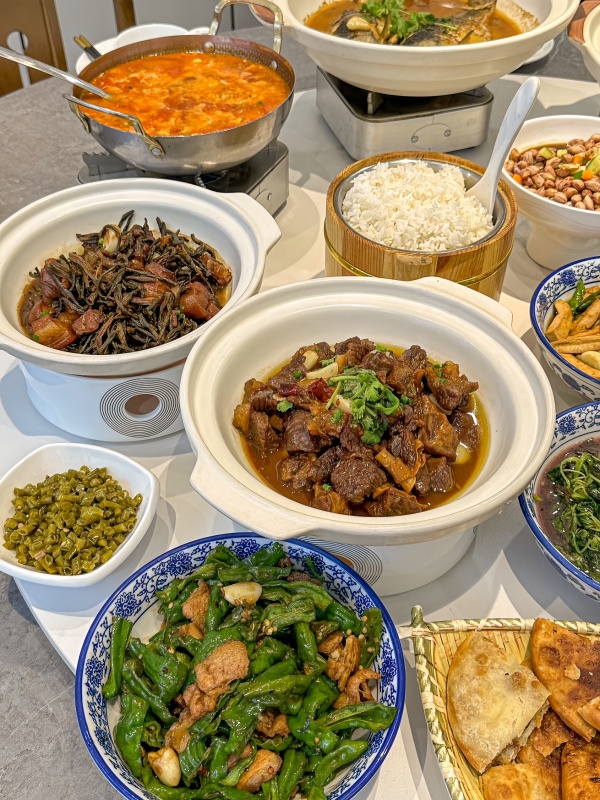
Anhui cuisine
What Makes Anhui Cuisine So Unique?
What Sets Hui Cuisine Apart from China’s Culinary Giants
I’ll be honest—the first time I had Anhui cuisine, I didn’t quite get it. I was in a smoky courtyard in Tunxi, flipping through a menu with half-English translations and pictures that didn’t help. Dishes had names like “eight treasures duck” and “old goose pot,” and nothing looked Instagram-worthy. Everything sounded... brown?
But the flavors are layered in a way that sneaks up on you. One dish—a simple soup with mountain herbs—tasted flat at first sip. But it stayed in my mouth. Not spicy, not sweet. Just... something warm, like rainwater off a stone path. It reminded me of how silence can feel full. That’s how Hui cuisine works. It doesn’t try to impress in five seconds.
Compared to Sichuan or Cantonese food, Anhui cuisine is quiet. It’s more rooted in texture, balance, and the “feel” of the land than in showy plating. Dishes are meant to be nourishing, not decorative. And maybe that’s why so many travelers overlook it—until they realize it’s the food they actually remember.
Flavors from Forests and Rivers: A Natural Foundation
In southern Anhui, near places like Shexian or Yixian, the markets don’t sell trends. They smell like damp bamboo and firewood. You’ll see mushrooms laid out on straw mats, freshly dug yam roots in crates, bundles of something that looks like grass—but locals say it's for soup. I once saw a boy carrying a bag of frogs, still jumping. He said they’d be in his grandma’s stew by nightfall.
What you taste on the table comes straight from those hills. The chefs aren’t trying to “elevate” wild ingredients—they just don’t know any other way to cook. Bamboo shoots here aren’t side dishes. They’re the dish. Fern root noodles are a thing. Even the pickled vegetables come from jars that smell vaguely of mountain moss.
When people talk about “farm-to-table,” this is more like hill-to-ladle. It’s rough around the edges, but when you realize everything was grown, caught, or foraged nearby—it starts to taste different. Cleaner. More honest, if that makes sense.
Simplicity, Balance, and the Art of Stewing
If you wander into an Anhui kitchen, you probably won’t hear the clang of a wok. It’s more like quiet water simmering. The food isn’t “cooked fast” here—it’s coaxed. Most dishes are stewed or slow-braised. There’s something unhurried about it, like they’re not cooking for a clock, but for the body.
One time in Qimen, I waited nearly an hour for a dish called stewed pigeon with medicinal herbs. It came out in a thick ceramic pot, bubbling quietly. The meat fell apart the second I poked it. The broth wasn’t heavy, but it carried this low hum of flavors—goji berries, dang gui, maybe a little ginger? I wasn’t sure. It felt less like eating and more like recharging.
This is where Anhui cuisine quietly wins you over. Not with theatrics. But with food that respects time—and makes you slow down with it.
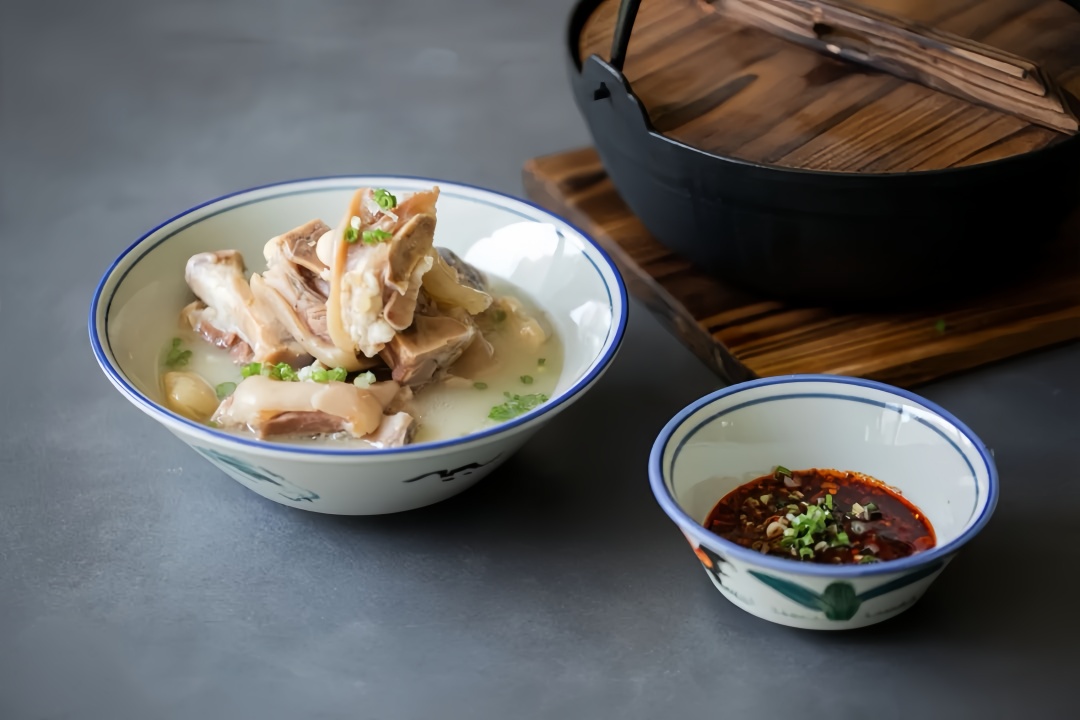
Pork Rib Soup
Dishes That Define a Region (And Might Surprise You)
The Bold and the Fermented: Stinky Mandarin Fish
I didn’t plan on ordering it. Really. I just pointed at a dish on the menu that had a blurry photo and the word “mandarin” in it. The waiter raised an eyebrow and nodded slowly—too slowly. That should’ve been my first clue.
When the dish arrived at a small restaurant in Tangkou, it was still bubbling, carried out in a clay pot that looked older than me. And the smell? Okay, it’s not for the faint-hearted. Kind of like soy sauce left out in the sun too long… mixed with overripe cheese and a hint of pine resin. Yeah. Not great.
But here’s the thing: after two bites, it starts to make sense. The flesh of the fermented fish is silky, no bones in sight, and the sauce coats your mouth in this mellow, almost syrupy umami. You stop noticing the smell and start noticing... warmth. Something ancient. It’s not delicious in the usual way—it’s deeper than that. And honestly, I couldn’t stop eating.
No surprise it’s a cornerstone of Anhui cuisine. Locals don’t just like it—they’re proud of how “challenging” it is. Which kind of says a lot about this place.
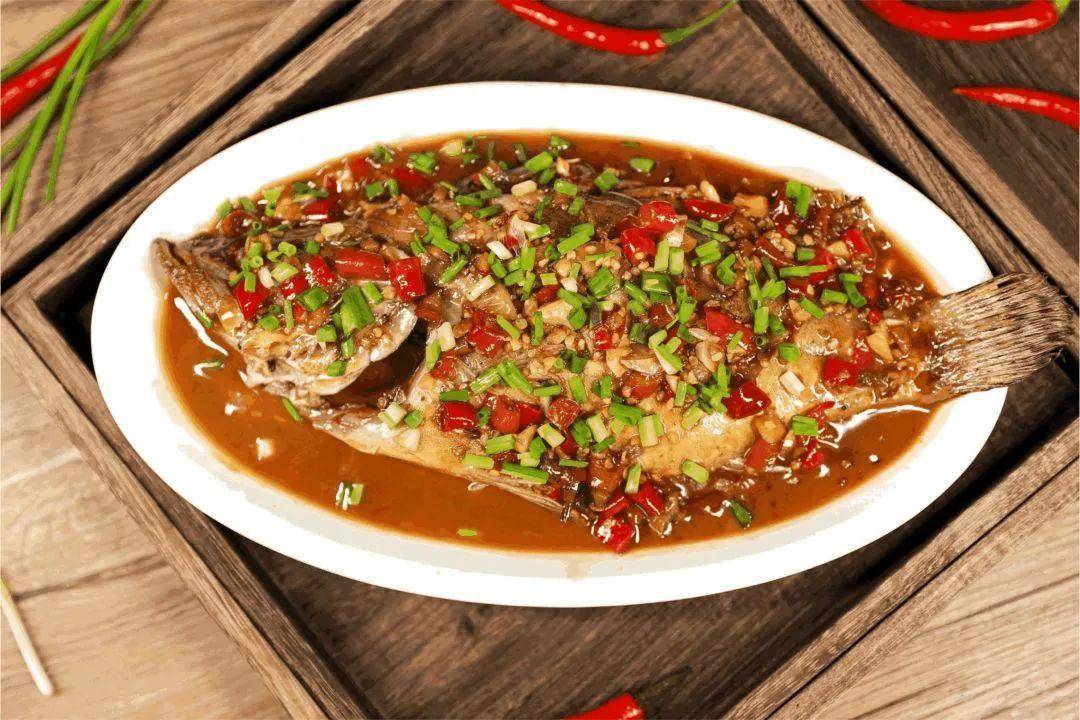
Stinky Mandarin Fish
From Statesman to Soup: The Li Hongzhang Hotchpotch
I’ll admit, I ordered this dish because of the name. I mean—Li Hongzhang? The Qing Dynasty statesman? There he was on the menu, sandwiched between “wild mushroom stir-fry” and “braised tofu.” It sounded more like a Wikipedia entry than dinner.
Turns out, the dish is just as chaotic as its backstory. Legend says Li was hosting some Western guests and told his cook, in frustration, to just throw everything into one pot. The result? A dense stew of chicken, sea cucumber, bamboo shoots, ham, dried bean curd, even quail eggs. It sounds like a disaster, right?
But the moment the lid came off—steam, a strange herbal sweetness, and this deep, earthy smell—I was hooked. Every spoonful was like flipping through channels: now tender meat, now chewy sea treasure, now soft tofu skin soaking up soy. It’s messy. But somehow it works. Like a diplomatic dinner where nobody argues because the food’s too good.
This isn’t just food—it’s context. Anhui cuisine has this way of making history edible. And weirdly… personal.
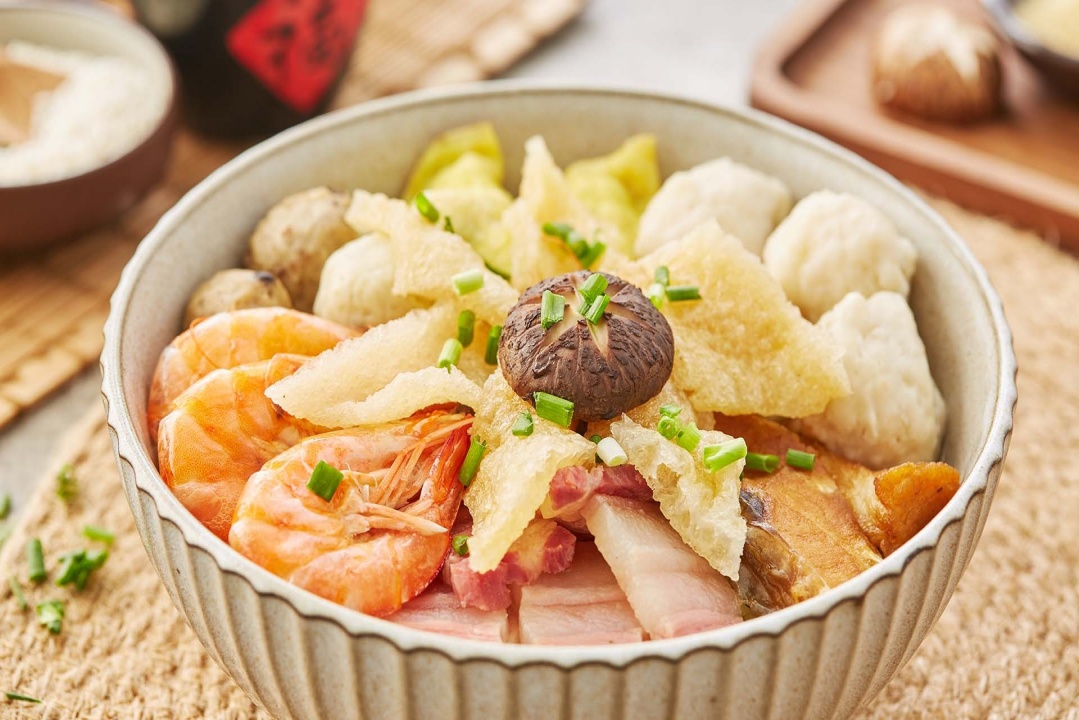
Li Hongzhang hodgepodge
Smoked Duck and Lily Bulbs: Anhui’s Quietest Comfort Food
You don’t always want bold. Some meals just… let you breathe. I ordered this—Wuwei cured duck with lily bulbs and mushrooms—at a roadside kitchen near Qiyun Mountain, mostly because everything else on the menu sounded exhausting. I needed something that didn’t shout. Something honest.
The duck came out cold, sliced paper-thin, edges slightly curled like it had been hanging for weeks. No sauce, no garnish—just the soft scent of smoke and soy, with a leathery sheen that said: “Don’t rush this.” I expected toughness. What I got was tender and deep, like the flavor had taken its time to settle in.
Next to it, a clay bowl of lily bulbs and mushrooms. Not fancy. Just slow-stewed, maybe in bone broth, maybe not. The lily was soft, barely holding together, the mushrooms chewy like forest floor. Earthy. Slightly bitter. Weirdly nostalgic.
Together, they didn’t fight for attention. No spice. No color games. Just quiet harmony. The kind of food you eat slowly, without needing a reason. And that, to me, is what Hui cuisine does best.
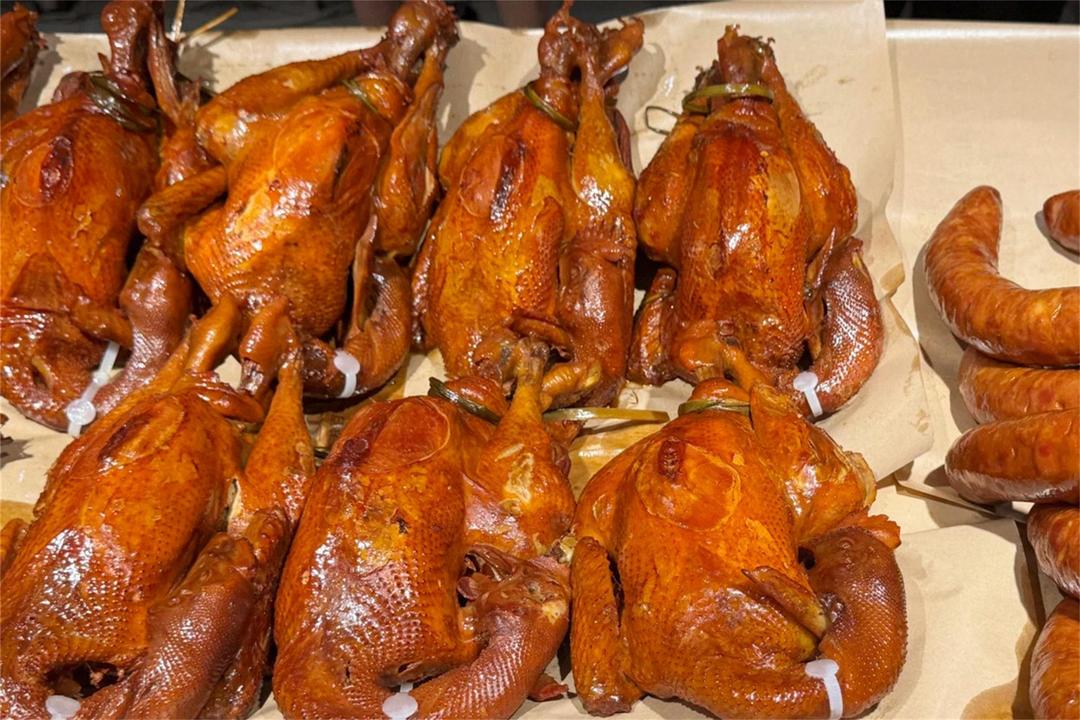
Wuwei smoked chicken
Where to Eat and What to See
Village Snacks and Scenic Plates: Eating in Hongcun and Xidi
Hongcun looks like it came out of someone’s dream—or maybe a movie set. Actually, both are true. I arrived there around mid-afternoon, slightly carsick, slightly hungry, and somehow both sensations vanished once I stepped into that white-walled, water-laced maze. The canals reflected rooftops like ink painting brushstrokes, and the smell of frying rice cakes followed me down every alley.
I wasn’t even planning to eat right away, but I saw this elderly woman selling something that looked like sesame glutinous pancakes. She called it mi bing. I bit into one—chewy, warm, with a layer of sweetness wrapped in earthy sesame oil. No seats, just a stone step and birds chirping. It was honestly better than half the desserts I’d had in Shanghai.
In Xidi, the vibe shifts—quieter, maybe more reserved. There I tried something called yipian mian (一片面)—literally “one-slice noodle.” It’s a huge sheet of handmade dough folded into soup, seasoned with mountain herbs and a splash of local vinegar. You eat it slowly. Not because it’s hot, but because the view is: old tile roofs, drying chili, laundry dancing on bamboo poles. The food makes more sense here, somehow.
Street Food with a View: What to Try Near Huangshan
After hiking Huangshan’s stone steps and watching clouds pour over granite peaks like some divine fog machine, your stomach will scream louder than your legs. I made the mistake of heading down without a food plan. Big error. Luckily, Tangkou—the village at the base—is like a recovery zone built entirely around hungry travelers.
There’s this side alley near the main bus station where vendors line up like clockwork after 5pm. One man was cooking skewered river eel over charcoal. He didn’t speak English, just pointed at the fish, smiled, and held up three fingers. ¥30 later, I had something smoky, salty, and surprisingly tender. The bones weren’t a problem—they practically melted.
Further along, someone was steaming dumplings stuffed with wild greens I couldn’t name. A girl next to me said they were picked that morning. She might’ve been lying, but they tasted like they were. I burned my tongue. Worth it.
The best part? You eat all this standing up, surrounded by mist still rising from the mountain. And if you time it right—say, 6:30 to 7pm—the sky glows orange behind the peaks. The whole street turns gold. I didn’t want to leave.
Skip the Buffets: Where Foreigners Can Eat Real Hui Cuisine
If you’re on a guided tour, chances are your meals will be… safe. Big hotel buffets, neatly labeled dishes, and food that tastes like it was designed not to offend anyone. It's not bad, but it’s not really Anhui cuisine either. The trick is to break away—just a little.
In Tunxi, near the Old Street, there’s a small restaurant called “徽府人家 (Hui People’s Home).” No glossy signage. Inside, wooden tables, handwritten menus, and the kind of staff who look surprised when you speak English. But they serve dongpo pork the way it's supposed to be: braised for hours, fatty but not greasy, served with pickled radish and hot rice. Under ¥60, and they let me stay to finish writing postcards.
In Shexian, I wandered into a family-run place behind a teahouse. The owner recommended tofu skin hotpot. I said yes. What came out was bubbling, filled with bamboo, bean curd, and slices of something vaguely medicinal. I couldn’t name all the flavors, but I cleaned the bowl. They didn’t have a card machine. Just WeChat Pay and cash.
One tip: avoid any restaurant with laminated photo menus, especially ones labeled “Local Flavor!” in four languages. You’ll get reheated stews and watered-down sauces. If it smells too clean, walk on.
- Hongcun
- Huangshan Mountain shrouded in mist
Seasons, Herbs, and the Slow Logic of Eating Well
What Locals Eat by Season (And Why It Matters)
If you stay in Anhui long enough, you’ll notice that people don’t ask what to eat—they ask when. “Now’s not the time for that,” a woman told me in a Shexian market when I reached for fresh lotus root. She wasn't being rude. She was right. It wasn’t in season. And here, that matters.
In spring, bamboo shoots are everywhere—big ones, baby ones, white ones with muddy roots still on. They get sliced thin and tossed with lard, sometimes steamed with cured ham. It’s the taste of the mountain waking up. Summer is more watery: river shrimp, sour soups, and cooling herbs like mint and daylily. Autumn leans heavier. Smoked meats start to show up again. Chestnut-stuffed chicken, rice wine, all warming the belly. Winter? That’s soup season. Bone broths with dried roots, chunks of yam, goji berries floating like tiny lanterns.
The rhythm of Anhui cuisine isn’t driven by cravings—it’s shaped by the land. Eating what’s in season doesn’t just taste better. It feels right. Like your body recognizes the logic before your brain catches up.
Healing on the Table: Goji, Angelica, and More
There’s a bowl of soup I drank in Yixian that I still think about, months later. It was pale brown, slightly bitter, with thin slices of black chicken, dried goji, and something that smelled vaguely medicinal. The cook said it had dang gui—angelica root. “Good for circulation,” she told me. “Especially for travelers.”
I didn’t understand half of what was in it, but I felt better. And not placebo-better. Real-better. Maybe it was the warmth, maybe it was the quiet, or maybe it was just having something hot that didn’t rush me.
This is where Hui cuisine blends into traditional Chinese medicine without making a big deal about it. You’ll see herbs mixed into everyday cooking—not as a gimmick, but because that’s how grandmothers cooked. Wolfberry shows up in porridge, not just tea. Dried chrysanthemum floats in a mild soup beside tofu skin. You’re not eating “superfoods”—you’re just eating like someone who lives close to the earth.
Flower Teas, Kitchen Remedies, and Everyday Balance
On a rainy morning in Tunxi, I ducked into a tea shop mostly to get out of the wind. The owner handed me a cup without asking. It was warm, golden, and floral—osmanthus, she said. “No caffeine. Good for lungs.” I wasn’t coughing, but I drank it anyway. It smelled like a steamed bun had fallen into a flower field.
Later that day, in a tiny food stall near Chengkan, I saw something that looked like clear jelly with petals suspended in it. Gui hua gao, the woman said. Osmanthus cake. Slightly sticky, barely sweet, and oddly refreshing. Not dessert, not medicine, but something in between.
Locals don’t think in terms of “healthy vs unhealthy.” They think in terms of balance. No labels. Just quiet corrections passed from one kitchen to the next. And that’s why eating in Anhui doesn’t feel like a performance—it feels like alignme
- Spring Bamboo Shoots
- Medicinal Food
How to Explore Anhui Cuisine Without Getting Lost
Restaurants That Welcome Foreigners (And Serve Authentic Hui Food)
Let’s be real—eating well in Anhui as a foreigner isn’t always straightforward. Especially if you don’t read Chinese or aren’t traveling with a local friend. Menus are often handwritten, sometimes with typos, and occasionally decorated with stock images that lie. I once walked into a restaurant in Tunxi that had pictures of pizza in the window… They didn’t serve pizza.
But some places do get it right. In Huangshan city (not the mountain area), there’s a place called Lao Jie Di Yi Lou (老街第一楼), right near the river end of Tunxi Old Street. They hand you a bilingual menu, point out seasonal dishes, and don’t water down the food for tourists. Their braised pork belly with preserved greens (梅干菜扣肉) was rich, fatty, and balanced—not too salty, not too sweet. Around ¥48 for a full portion.
Another option? Stay at guesthouses that include meals—especially ones run by families. In Hongcun, the guesthouse I stayed in didn’t list dishes, but every night a new meal appeared: stone frog with wild mushrooms, soy-stewed tofu skin, baby bok choy with fermented bean paste. Nothing fancy, but every dish made sense. The host explained them in simple English and used WeChat Pay, no problem.
Bottom line? Skip anywhere with glowing “Welcome Foreigners!” signs. The best meals are often from places that don’t expect you to walk in at all.
Avoid the Tourist Traps: Spotting Fake Hui Cuisine
There’s a pattern you start to notice after a few days in Anhui. The restaurants closest to scenic entrances—be it Hongcun, Xidi, or even the Huangshan ticket plaza—tend to offer the exact same laminated menu. The menus? They look cloned—identical fonts, same glossy photos, and a predictable lineup of so-called “classics.” You’ll see things like “Hui Style Braised Chicken,” “Eight Treasure Tofu,” and some oddly sweet version of duck that barely resembles anything local.
Except none of them taste quite right. One time, I bit into a “sweet duck” and realized it was just overcooked meat in sugary soy sauce. No depth. No texture. Just syrup.
Locals avoid these places too. You’ll see them queueing up at back-alley storefronts or quiet diners two blocks away. My best trick? Look at what’s on other people’s tables. If it’s all chili-heavy or deep-fried to death, it’s not Hui cuisine—it’s a shortcut. Real Hui food is softer, gentler, and doesn’t need fireworks.
Another red flag? Multilingual menus with perfect English. It usually means they cooked the SEO before they cooked the dish. Follow your nose, not the signage.
Language, Apps, and Ordering Tips for First-Time Travelers
Ordering food in Anhui can feel like decoding a puzzle—especially when the waiter doesn’t speak English and the menu says things like “Buddha Jump Wall” or “Mountain Immortal Enters Soup.” I’ve seen those exact phrases. It’s real.
So here’s how I survived:
First, use a photo translation app. Google Translate works okay for menus, but Pleco (with OCR add-on) is better for food-specific terms. Second, bring screenshots. I kept photos of dishes I liked, including the Chinese characters. Show it to your server—they usually nod, laugh, and bring exactly that.
If you want to sound like you’ve got some clue, just learn this phrase:
“Nǐmen yǒu zhēn de huī cài ma?” (你们有真的徽菜吗?) – “Do you have real Hui cuisine?”
You might get a raised eyebrow. But more than once, that question got me access to an off-menu dish.
Apps like Dianping can help, but are mostly in Chinese. Ctrip restaurant reviews sometimes have English feedback, and you can often book meals through your hotel or guide in advance.
And when in doubt? Just point at what someone else is eating. Worked for me more times than I can count.
Looking for more regional food adventures in China? After tasting the deep, forest-born flavors of Anhui cuisine, you might want to explore the spice-laden streets of Chengdu, the dim sum teahouses and herbal soups of Guangzhou, or the breakfast alleyways and street snacks of Shanghai. Check out our full food guides for each city.
Frequently Asked Questions (FAQs)
Q: What is Anhui cuisine known for?
It’s known for being... quiet. Not bland, just subtle. Unlike Sichuan’s heat or Cantonese elegance, Anhui cuisine (Huī cài) doesn’t try to impress on the first bite. Locals lean into stewing, smoking, and braising—methods that draw flavor slowly rather than flash it. Think tender mountain herbs, soft fish soaked in umami-rich sauces, and soups that taste like they’ve been simmering for decades. It’s food that matches the land: forests, rivers, old villages. Some dishes—like stinky mandarin fish—sound intense but reveal surprising balance. Others, like smoked chicken or tofu skin stew, offer quiet comfort. You’ll often find wild-foraged ingredients, seasonal greens, and dried medicinal roots playing quiet but essential roles.
Q: Is Anhui food spicy like Sichuan or Hunan cuisine?
Not really. You won’t find much chili oil or numbing peppercorns here. While some areas of Anhui might use pickled chili in small quantities—especially in summer stir-fries—the overall palate is mild, herbal, and savory. If you’re sensitive to spice, Anhui cuisine might feel like a relief. And if you’re used to bold heat, you might feel underwhelmed at first—until the flavors start to sink in, usually halfway through your second dish. That said, tourist restaurants sometimes “spice up” dishes to match traveler expectations, so real Hui food might actually taste less exciting to some until you realize how clean it is.
Q: Are there vegetarian-friendly options in Anhui cuisine?
Definitely. Many dishes in Anhui cuisine focus on vegetables and plant-based ingredients, especially mountain herbs, tofu skin, bamboo shoots, and seasonal greens. You’ll often find stews with mushroom medleys, stir-fried fern roots, or soups made with lily bulbs and lotus seeds. In fact, the Buddhist influence in some areas—like Jiuhua Mountain—means vegetarian meals are common. Just be sure to clarify your needs. Meat broths are sometimes used even when no meat is visible. It helps to learn or show this phrase: “不要肉,也不要肉汤” (“no meat, not even meat broth”).
Q: How is Hui cuisine different from Jiangsu or Zhejiang food?
Anhui shares borders—and ingredients—with these two eastern culinary giants, but it doesn’t try to compete in refinement. Where Jiangsu leans toward sweetness and elegant textures, and Zhejiang is known for fresh seafood and precise knife work, Hui cuisine is earthier, smokier, and often slower. There’s more wood, more clay, more patience. You’re more likely to eat something foraged, dried, or stewed for hours. In a word? Rustic. It’s the kind of food that feels like it was made by someone’s grandmother, not a chef trained at a hotel school.
Q: What’s the best time of year to try Anhui cuisine?
It depends what you want to taste. Spring is best for bamboo shoots and early wild greens—crunchy, fresh, and often fried simply in lard. Summer brings river fish and cooling herbs, often turned into light soups or cold dishes. Autumn leans into preserved flavors—think smoked meats and braised pork belly. And winter? Winter is the soul of Hui food: medicinal stews, old chicken soups, yam-and-dried-date pots. If you want a mix of comfort and complexity, October to December might be the sweet spot. Plus, it’s post-peak season—less crowded, more honest food.
Q: Is it easy to find Hui food outside of Anhui?
Not really. Unlike Sichuan or Cantonese cuisine, which have spread across China and abroad, Hui cuisine remains mostly local. You might find an “Anhui-style” dish in bigger cities like Shanghai or Hangzhou, but it’s often adjusted to suit broader tastes. If you’re outside China, you’d be lucky to find a single authentic Hui restaurant. This makes eating in Anhui a bit of a one-time chance. For those truly curious about regional Chinese food, this is a destination worth visiting for the plate alone.
Q: What’s the deal with herbs in Hui cuisine? Are they just for health?
In Anhui, herbs aren’t a side story—they’re part of the plot. Sure, goji berries, angelica root, or chrysanthemum might have health benefits, but locals add them because that’s how their families have always cooked. A stew might include yam, red dates, and dried longan—not because it’s trendy, but because grandma said so. The result isn’t bitter medicine, but something that feels restorative without shouting about it. It’s food that listens to your body. No buzzwords. Just quiet logic passed down by taste.


